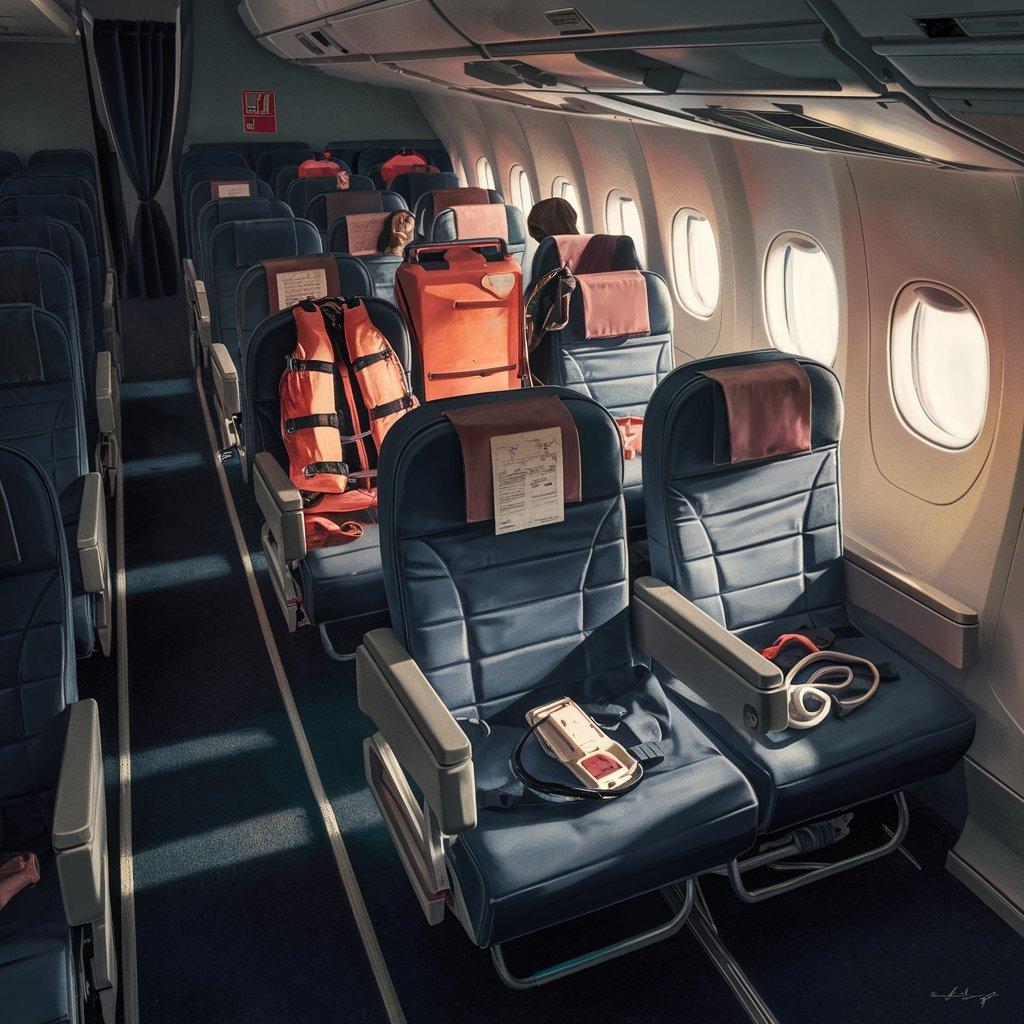Emergency situations can arise unexpectedly during flights, emphasizing the paramount importance of having reliable emergency equipment di pesawat on board. This article delves into the various aspects of aircraft emergency equipment, from its types to maintenance procedures, aiming to underscore its significance in ensuring passenger safety.

Understanding the Importance of Aircraft Emergency Equipment
Aircraft emergency equipment serves as a crucial safety net, providing passengers and crew with the tools necessary to mitigate risks during unforeseen circumstances. From life rafts to oxygen masks, each piece of equipment plays a vital role in safeguarding lives in emergencies.
The Role of Emergency Equipment
In the event of an emergency, such as cabin depressurization or water landing, emergency equipment di pesawat becomes indispensable. Oxygen masks drop from overhead compartments to ensure passengers can breathe at high altitudes, while life rafts provide a means of survival in case of water ditching.
Types of Emergency Equipment
Emergency equipment encompasses a wide range of tools designed to address diverse scenarios. This includes flotation devices, fire extinguishers, first aid kits, emergency lighting, and signaling devices. Each item is meticulously selected based on its functionality and effectiveness in crisis situations.
Emergency Evacuation Procedures
Efficient evacuation procedures are paramount during emergencies to ensure the safe and swift evacuation of passengers and crew. Crew members are trained to guide passengers to emergency exits, deploy evacuation slides, and facilitate orderly disembarkation, minimizing the risk of injuries during evacuation.
Maintenance and Inspection
Regular maintenance and inspection of emergency equipment di pesawat are imperative to guarantee its reliability when needed. Airlines adhere to stringent maintenance schedules, conducting routine checks and replacements to ensure that all equipment is in optimal condition.
Emergency Equipment Training
Crew members undergo comprehensive training to familiarize themselves with the operation of emergency equipment and procedures. This training includes simulated emergency scenarios, allowing crew members to practice their response and coordination skills under realistic conditions.

Legal Requirements
Aviation authorities impose strict regulations concerning the presence and maintenance of emergency equipment on aircraft. Airlines must comply with these regulations to ensure the airworthiness of their fleet and the safety of passengers and crew.
Emergency Equipment Suppliers
Reliable suppliers play a pivotal role in providing airlines with high-quality emergency equipment di pesawat. These suppliers adhere to industry standards and regulations, offering a wide range of products tailored to meet the specific needs of different aircraft models.
Case Studies
Real-life examples illustrate the crucial role of emergency equipment in ensuring the safety of passengers and crew during emergencies. These case studies highlight successful emergency evacuations and the effective utilization of onboard equipment to mitigate risks.
Future Trends
Advancements in technology continue to shape the landscape of aircraft emergency equipment. Innovations such as advanced life rafts, enhanced fire suppression systems, and improved evacuation slides promise to further enhance aviation safety in the future.
Conclusion
In conclusion, emergency equipment di pesawat forms the backbone of aviation safety, providing passengers and crew with the necessary tools to confront and overcome emergencies effectively. By prioritizing the maintenance, training, and innovation of emergency equipment, the aviation industry reaffirms its commitment to safety above all else.
FAQs
- How often are aircraft emergency equipment inspections conducted?
- What training do flight attendants undergo regarding emergency equipment?
- Are there any legal consequences for airlines failing to maintain emergency equipment?
- Can passengers request additional information about onboard emergency procedures?
- Are there any special considerations for emergency equipment on long-haul flights?
- How do airlines ensure that emergency equipment is easily accessible to passengers?
